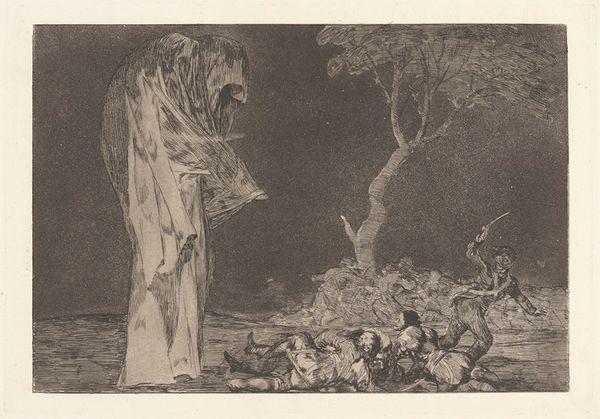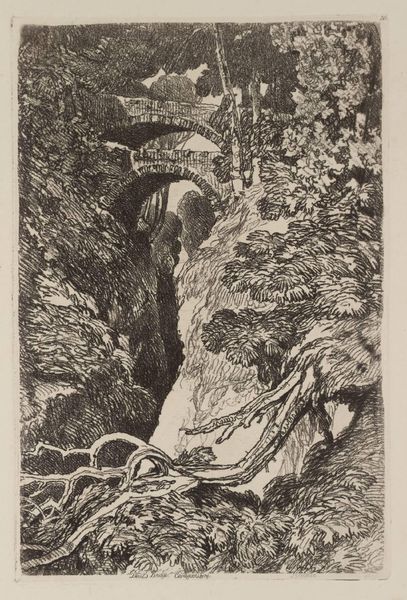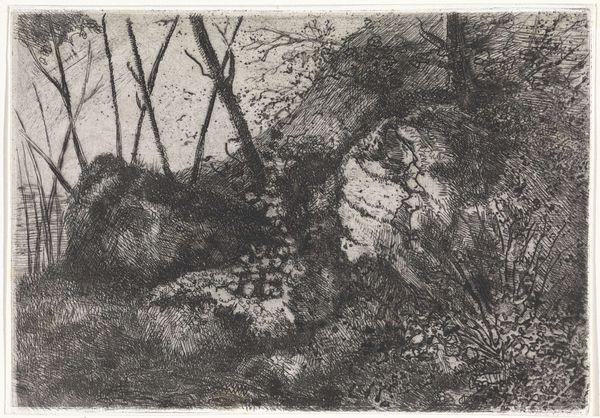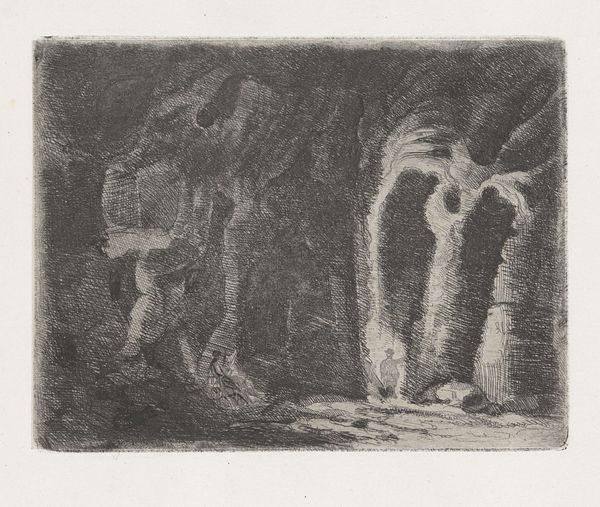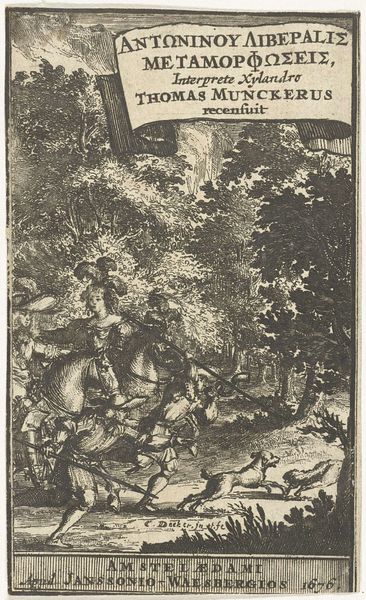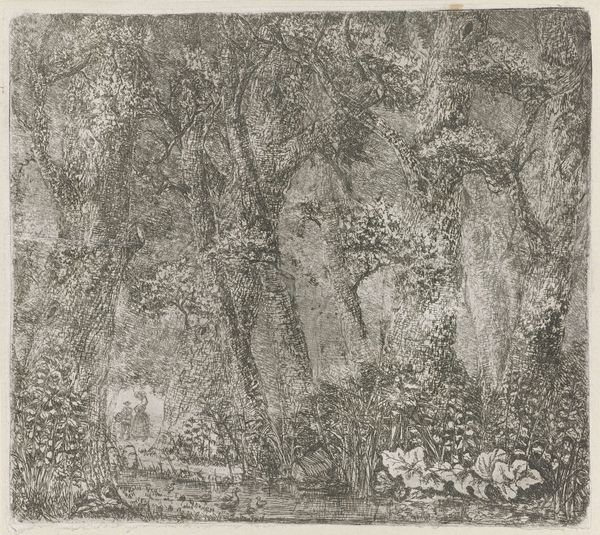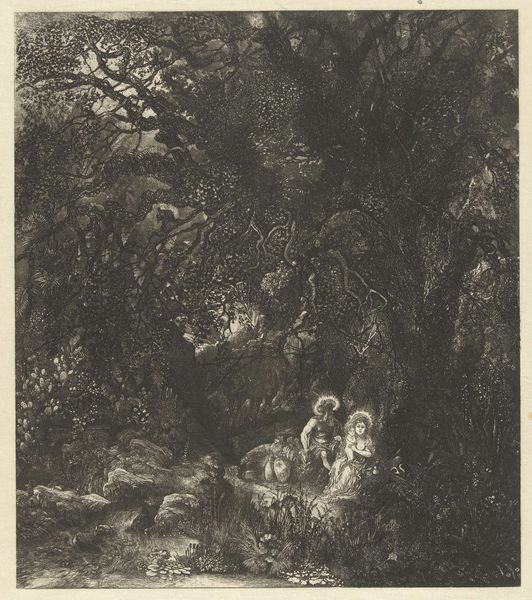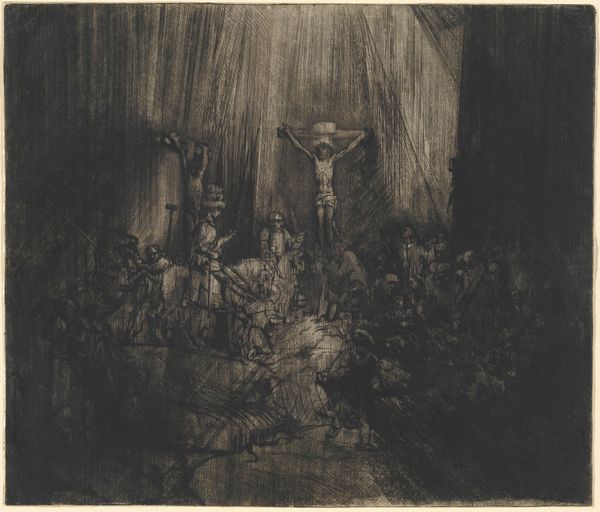
print, etching
#
narrative-art
# print
#
etching
#
landscape
#
figuration
#
romanticism
#
history-painting
Dimensions: height 82 mm, width 122 mm
Copyright: Rijks Museum: Open Domain
Editor: We're looking at Rodolphe Bresdin's "Christus wekt Lazarus op," created between 1843 and 1844. It’s an etching, and honestly, it's incredibly detailed and a bit overwhelming. The composition feels dense. What's your perspective? Curator: Indeed. Let us analyze the formal qualities. Notice the dense network of lines, almost suffocating in their intensity. How does this all-over composition affect your perception of space? Editor: It makes the space feel flattened, almost like a tapestry rather than a deep landscape. There's a lack of aerial perspective. Curator: Precisely. Bresdin eschews traditional methods of creating depth, favoring instead a uniformly detailed surface. What effect does the use of light and dark have on this dense visual field? Editor: Well, the chiaroscuro is intense, with areas of deep shadow and bright highlights competing for attention. This definitely contributes to the drama of the scene. But are there any particular forms which dominate in the image for you? Curator: Note the contorted figures, they serve primarily as formal elements within a balanced arrangement and the tree. Its roots intermingle with Lazarus. Bresdin manipulates the etching medium, creating textures that border on the grotesque, adding layers of meaning. Observe also the overall composition of the space and its boundaries which may hint at his engagement with surrealist philosophy. Editor: So, you are not primarily interpreting its religious content or emotional impact of the depicted story? Curator: It is more about the image. The story is represented but as a pretext to explore lines and forms. Editor: That's fascinating. I initially got lost in the details and the narrative. Curator: By shifting focus to the elements like line, form, and texture, we uncover other subtleties in this intense work. Editor: Thank you. This approach to analyzing form and composition really opens up a new dimension for understanding the work.
Comments
No comments
Be the first to comment and join the conversation on the ultimate creative platform.
